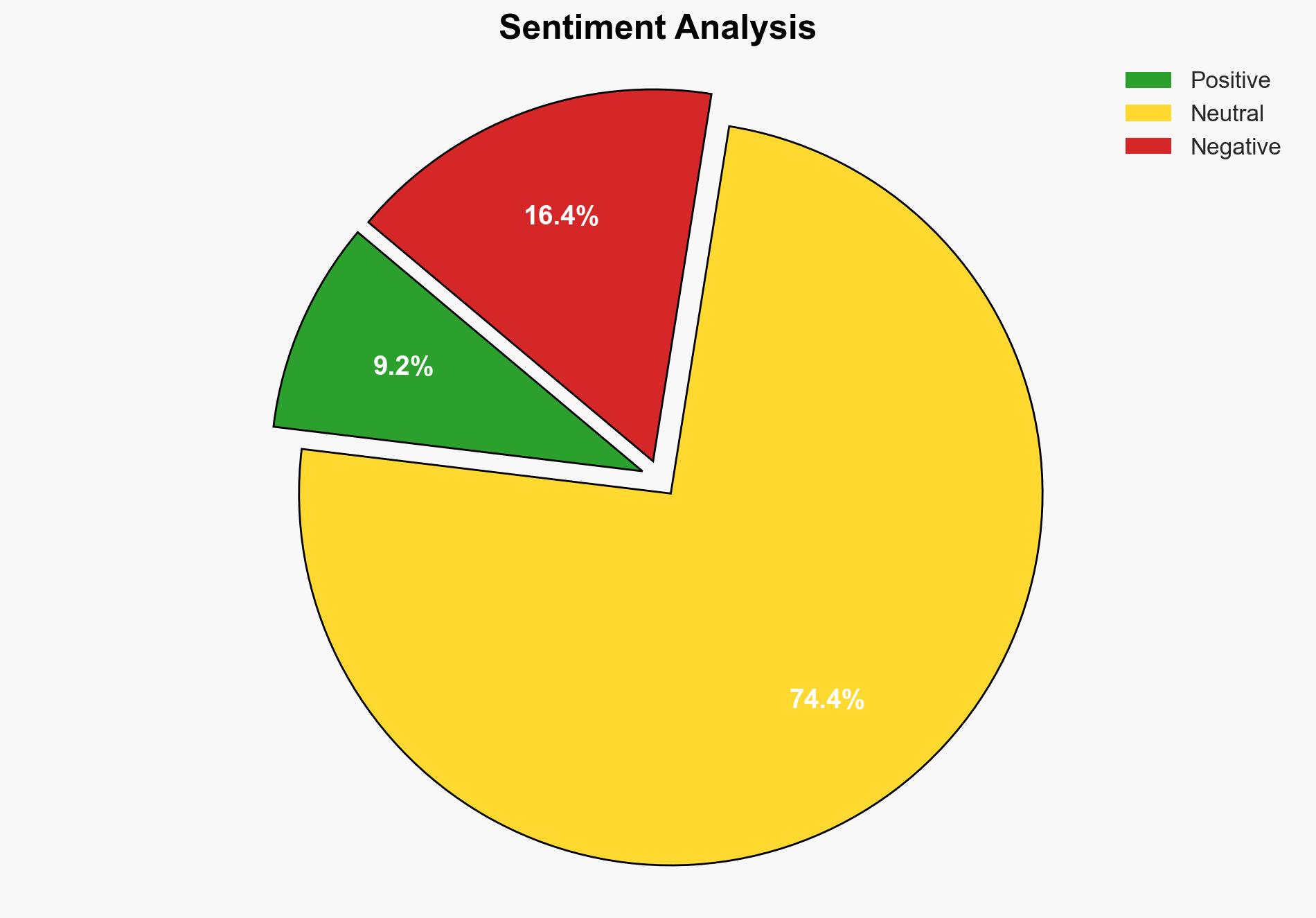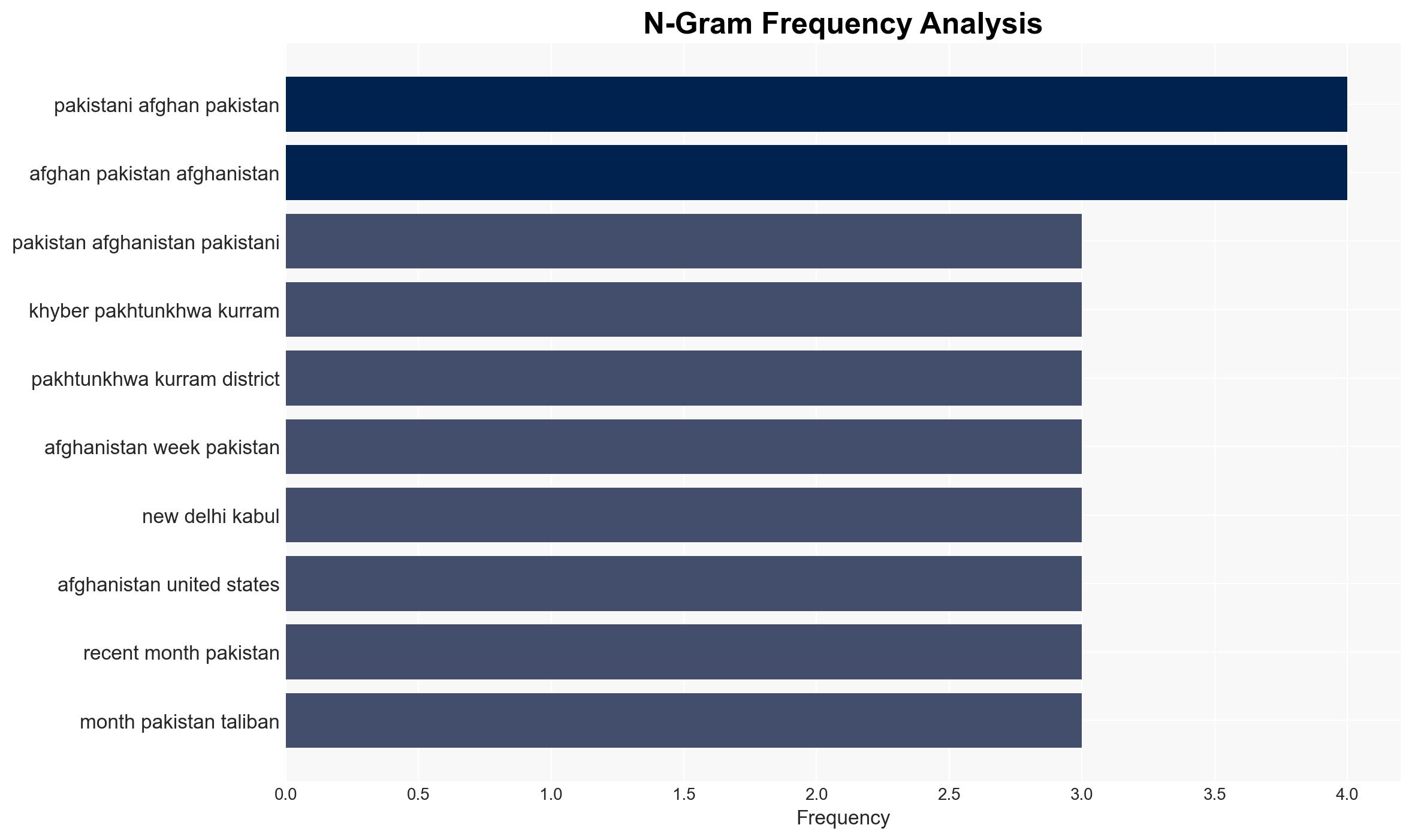Pakistani forces kill 23 fighters in wave of Afghan border raids – Al Jazeera English
Published on: 2025-11-20
AI-powered OSINT brief from verified open sources. Automated NLP signal extraction with human verification. See our Methodology and Why WorldWideWatchers.
Intelligence Report:
1. BLUF (Bottom Line Up Front)
The recent Pakistani military operations along the Afghan border, resulting in the death of 23 fighters, are likely a response to escalating threats from the Tehreek-e-Taliban Pakistan (TTP) and perceived support from Afghanistan and India. The most supported hypothesis is that Pakistan is intensifying its military efforts to counteract TTP activities and perceived foreign influences. Confidence Level: Moderate. Recommended action includes diplomatic engagement with Afghanistan and India to de-escalate tensions and enhance intelligence-sharing mechanisms.
2. Competing Hypotheses
Hypothesis 1: Pakistan’s military operations are primarily aimed at countering the TTP’s increased activities and influence in the region, with a focus on neutralizing immediate threats.
Hypothesis 2: The operations are part of a broader strategic maneuver to counter perceived foreign interference from Afghanistan and India, leveraging military action to send a political message.
Hypothesis 1 is more likely due to the immediate threat posed by the TTP’s activities, as evidenced by recent attacks and the historical context of TTP’s objectives to destabilize Pakistan. However, Hypothesis 2 cannot be dismissed given the geopolitical tensions and accusations exchanged between Pakistan, Afghanistan, and India.
3. Key Assumptions and Red Flags
Assumptions include the belief that the TTP is the primary threat to Pakistani security and that Afghanistan and India are involved in supporting anti-Pakistan elements. Red flags include potential bias in attributing blame to India and Afghanistan without concrete evidence, and the risk of Pakistan’s actions being perceived as aggressive by neighboring countries, potentially escalating tensions.
4. Implications and Strategic Risks
The operations could lead to increased cross-border tensions, risking military skirmishes with Afghanistan. There is also a risk of retaliatory attacks by the TTP, potentially destabilizing the region further. Politically, strained relations with Afghanistan and India could hinder peace talks and regional cooperation. Economically, prolonged tensions may impact trade and investment in the region.
5. Recommendations and Outlook
- Engage in diplomatic dialogues with Afghanistan and India to clarify intentions and reduce misunderstandings.
- Enhance intelligence-sharing with regional partners to better monitor and counter TTP activities.
- Best Scenario: Successful diplomatic engagement leads to de-escalation and improved regional security cooperation.
- Worst Scenario: Escalation of military tensions leading to broader regional conflict.
- Most-likely Scenario: Continued low-intensity conflict with sporadic diplomatic engagements and ongoing military operations.
6. Key Individuals and Entities
Shehbaz Sharif (Pakistani Prime Minister), Khawaja Asif (Pakistani Minister of Defence), Tehreek-e-Taliban Pakistan (TTP).
7. Thematic Tags
Structured Analytic Techniques Applied
- ACH 2.0: Reconstruct likely threat actor intentions via hypothesis testing and structured refutation.
- Indicators Development: Track radicalization signals and propaganda patterns to anticipate operational planning.
- Narrative Pattern Analysis: Analyze spread/adaptation of ideological narratives for recruitment/incitement signals.
Explore more:
Counter-Terrorism Briefs ·
Daily Summary ·
Support us





